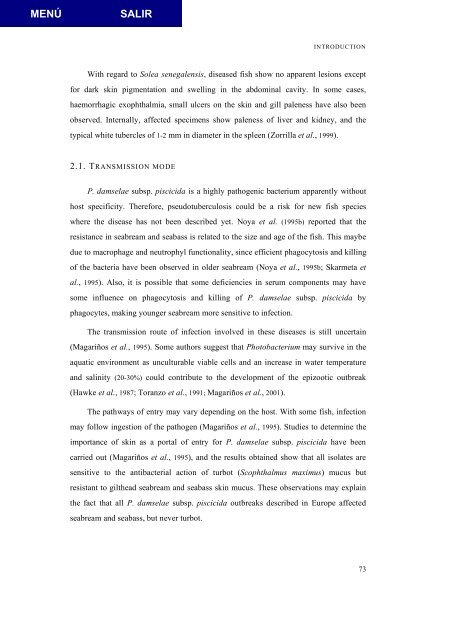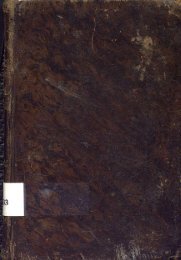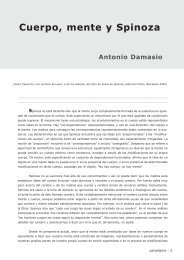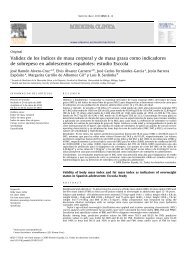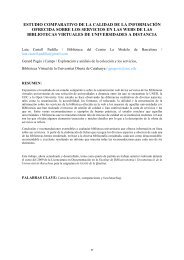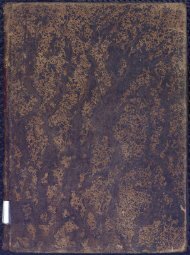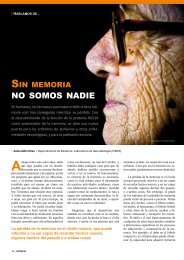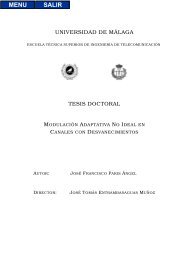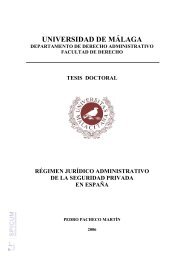Papel de las actividades superóxido dismutasa y catalasa en la ...
Papel de las actividades superóxido dismutasa y catalasa en la ...
Papel de las actividades superóxido dismutasa y catalasa en la ...
Create successful ePaper yourself
Turn your PDF publications into a flip-book with our unique Google optimized e-Paper software.
INTRODUCTION<br />
With regard to Solea s<strong>en</strong>egal<strong>en</strong>sis, diseased fish show no appar<strong>en</strong>t lesions except<br />
for dark skin pigm<strong>en</strong>tation and swelling in the abdominal cavity. In some cases,<br />
haemorrhagic exophthalmia, small ulcers on the skin and gill pal<strong>en</strong>ess have also be<strong>en</strong><br />
observed. Internally, affected specim<strong>en</strong>s show pal<strong>en</strong>ess of liver and kidney, and the<br />
typical white tubercles of 1-2 mm in diameter in the sple<strong>en</strong> (Zorril<strong>la</strong> et al., 1999).<br />
2.1. TRANSMISSION MODE<br />
P. damse<strong>la</strong>e subsp. piscicida is a highly pathog<strong>en</strong>ic bacterium appar<strong>en</strong>tly without<br />
host specificity. Therefore, pseudotuberculosis could be a risk for new fish species<br />
where the disease has not be<strong>en</strong> <strong>de</strong>scribed yet. Noya et al. (1995b) reported that the<br />
resistance in seabream and seabass is re<strong>la</strong>ted to the size and age of the fish. This maybe<br />
due to macrophage and neutrophyl functionality, since effici<strong>en</strong>t phagocytosis and killing<br />
of the bacteria have be<strong>en</strong> observed in ol<strong>de</strong>r seabream (Noya et al., 1995b; Skarmeta et<br />
al., 1995). Also, it is possible that some <strong>de</strong>fici<strong>en</strong>cies in serum compon<strong>en</strong>ts may have<br />
some influ<strong>en</strong>ce on phagocytosis and killing of P. damse<strong>la</strong>e subsp. piscicida by<br />
phagocytes, making younger seabream more s<strong>en</strong>sitive to infection.<br />
The transmission route of infection involved in these diseases is still uncertain<br />
(Magariños et al., 1995). Some authors suggest that Photobacterium may survive in the<br />
aquatic <strong>en</strong>vironm<strong>en</strong>t as unculturable viable cells and an increase in water temperature<br />
and salinity (20-30%) could contribute to the <strong>de</strong>velopm<strong>en</strong>t of the epizootic outbreak<br />
(Hawke et al., 1987; Toranzo et al., 1991; Magariños et al., 2001).<br />
The pathways of <strong>en</strong>try may vary <strong>de</strong>p<strong>en</strong>ding on the host. With some fish, infection<br />
may follow ingestion of the pathog<strong>en</strong> (Magariños et al., 1995). Studies to <strong>de</strong>termine the<br />
importance of skin as a portal of <strong>en</strong>try for P. damse<strong>la</strong>e subsp. piscicida have be<strong>en</strong><br />
carried out (Magariños et al., 1995), and the results obtained show that all iso<strong>la</strong>tes are<br />
s<strong>en</strong>sitive to the antibacterial action of turbot (Scophthalmus maximus) mucus but<br />
resistant to gilthead seabream and seabass skin mucus. These observations may exp<strong>la</strong>in<br />
the fact that all P. damse<strong>la</strong>e subsp. piscicida outbreaks <strong>de</strong>scribed in Europe affected<br />
seabream and seabass, but never turbot.<br />
73


